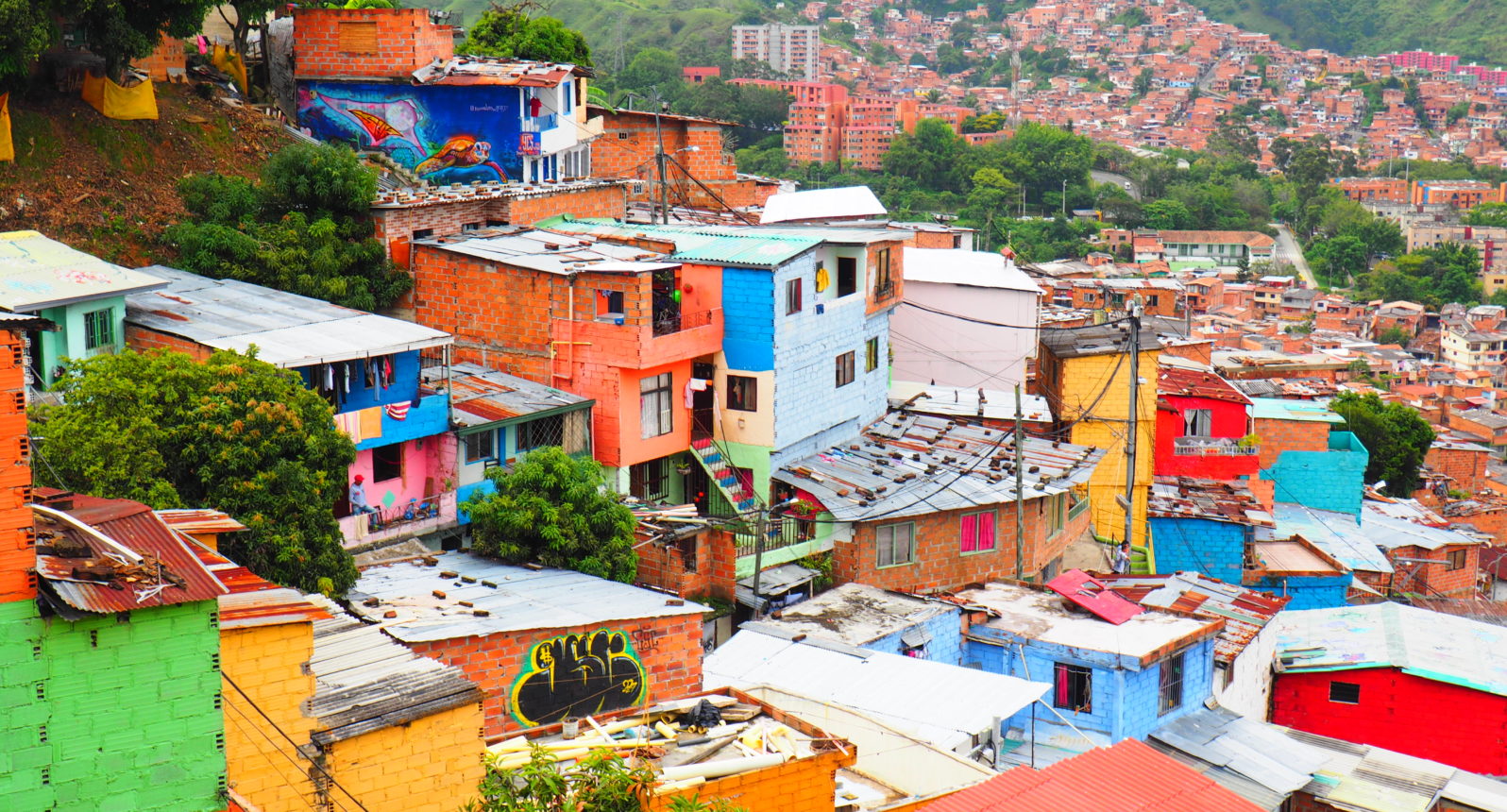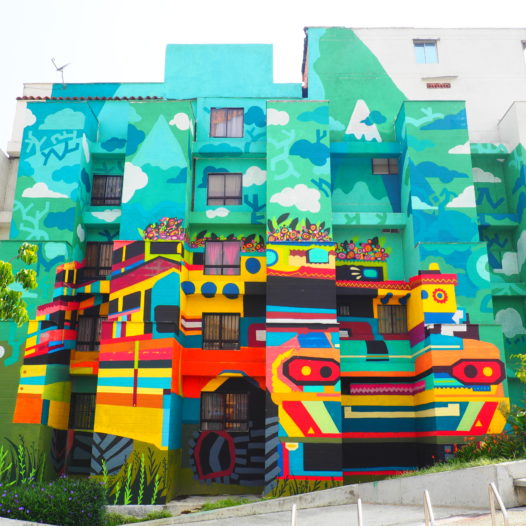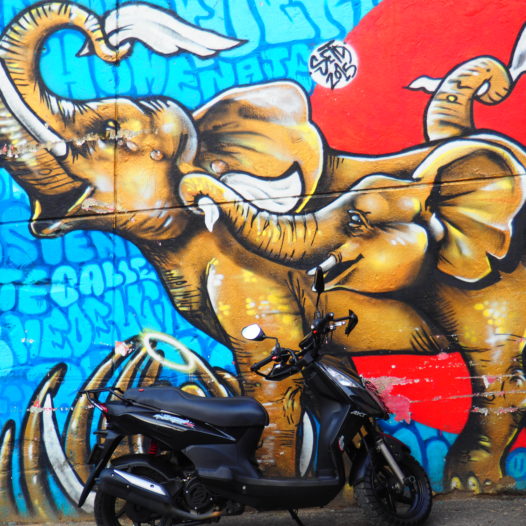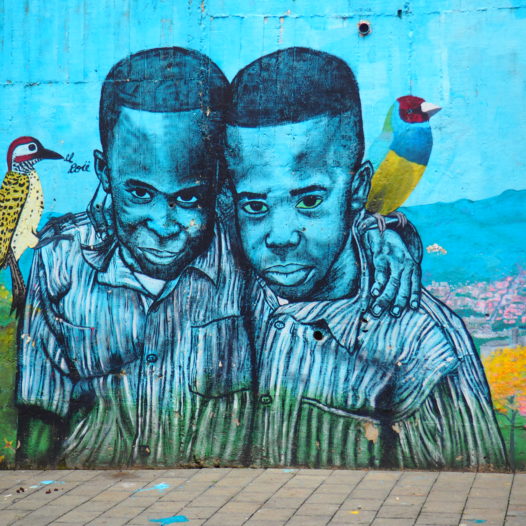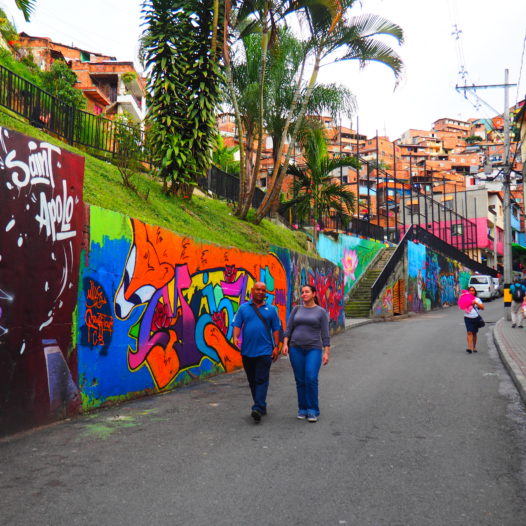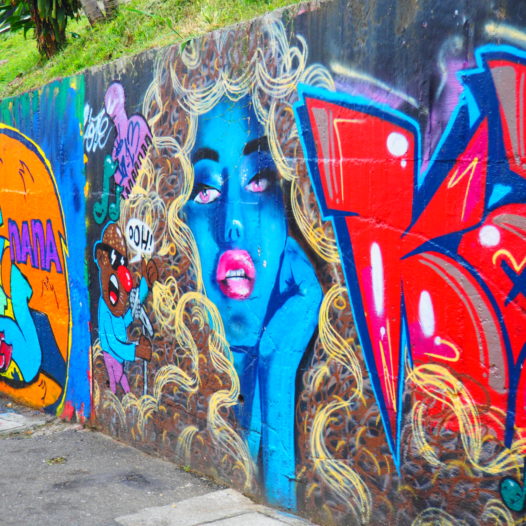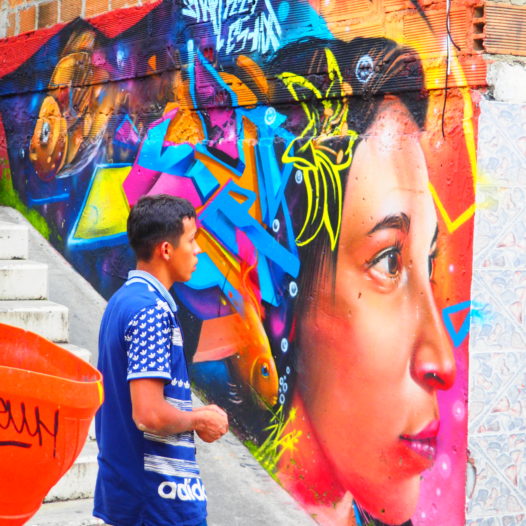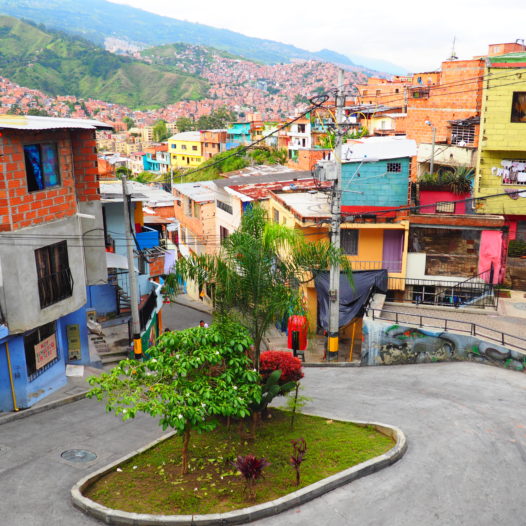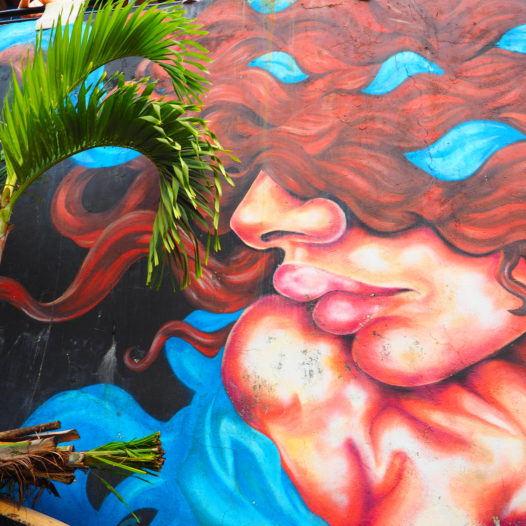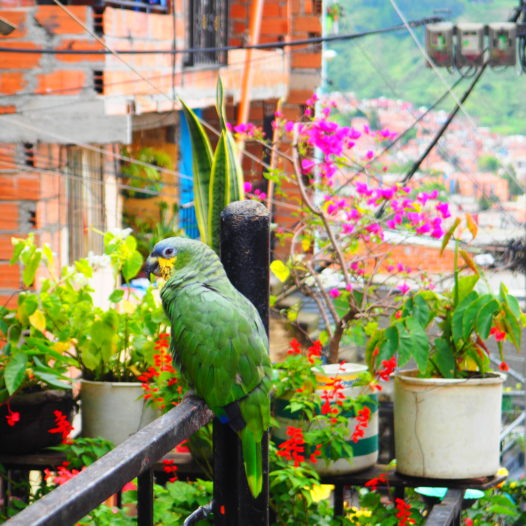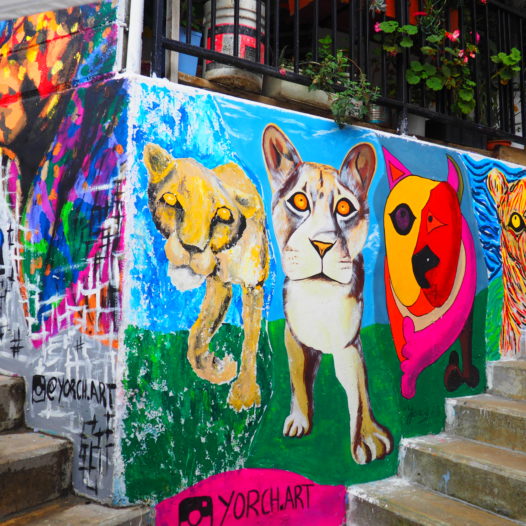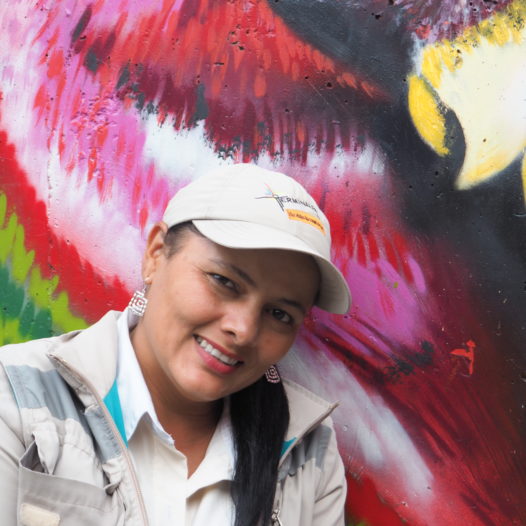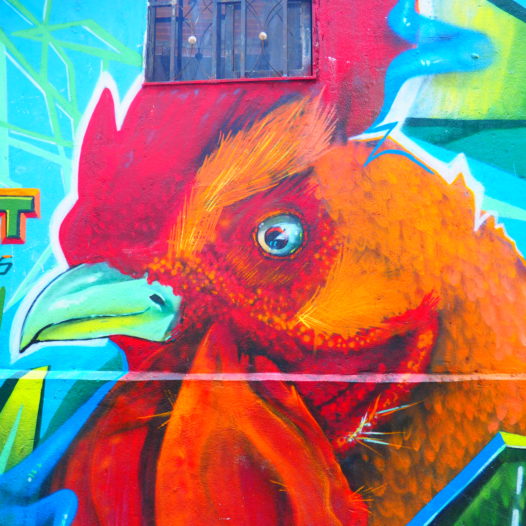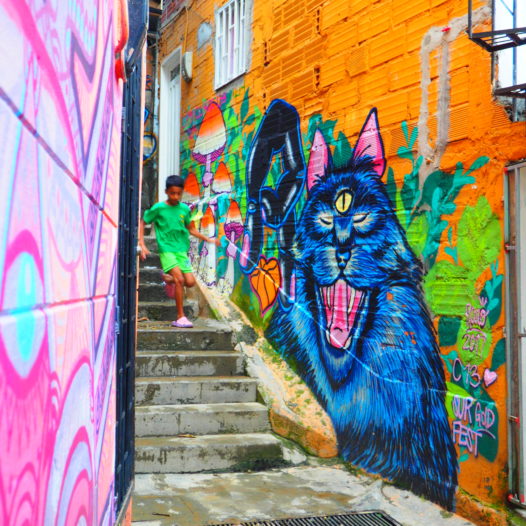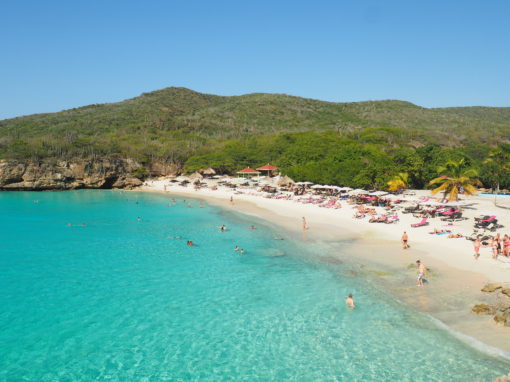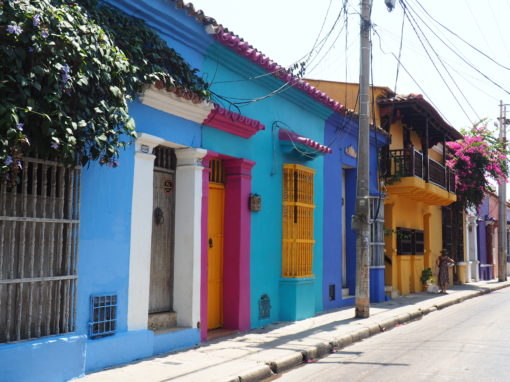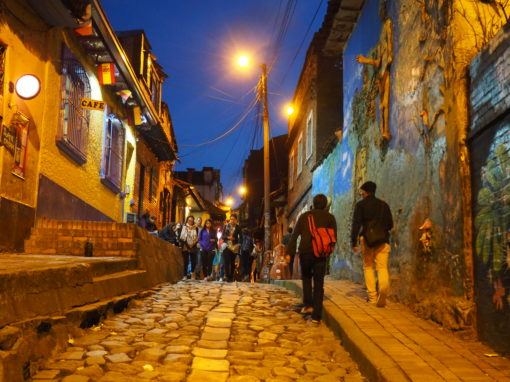If you’re a big fan of colourfully painted walls, best you go in Medellin to Comuna 13. Now, this might not look like an obvious choice since the area was the most dangerous district in Medellín, plagued by violence at the hands of guerrillas, paramilitary groups, drug cartels and local gangs. But nowadays the community is experiencing better days.
The neighbourhood used to be of strategic importance to a variety of groups, because its green hills gave acces to the San Juan Highway; leading west out of the city. Those that were able to control the smuggle route, could control the illegal goods flowing in and out of Medellín, and much of the rest of the country.
Due to all this violence the area had a very high crime rate. This until October 16, 2002, the day that the Colombian military launched the controversial ‘Operation Orion’. The intention was to remove all the rebels from the area, overnight. Some 1,000 policemen, soldiers, and aircrew in helicopters attacked the area (comprising of roughly 100,000 inhabitants). However, the operation hit the local people too and the siege made it impossible to seek medical attention for the wounded. Thus the community took to the streets in solidarity flying white rags (featured in a couple of graffitis).
After the siege, residents voiced their discontent and anger with the violence that occurred in 2002 through art and community events, and with that the area has transformed a lot in the last few years. Call it a ‘laboratory area’, since many collectives try out things and struggle to improve the neighbourhood. The foundation ‘Kolacho’, formed by community leaders and artists, for example tries to promote the message of peace through education, hip hop music, graffiti, breakdance and DJ’ing. This in order to make sure kids put their energy into those aspects instead of violence. The artists of the collective are responsible for over 90% of the graffiti art that are to be seen in the neighbourhood.
The biggest ‘renewal’ project in the area is the enormous 384m orange-roofed outdoor escalator, uniting the hillside area to the rest of Medellín. The escalator was completed in 2011 and is divided into several sections, allowing people that are living on different levels to access the transportation structure. Though it has been six years, the escalator is still immaculate. Moreover, people now feel more connected to the rest of the city. All in all, Comuna 13 can be seen as an example of how innovative urban regeneration projects (such as music and art) can be used to transform communities.
Though there has been a stop of violence for years between gangs in the area, this is still not the place to be once the sun goes down. During the day, don’t wave around with your camera or phone either (“No dar papaya” as the Colombians would say), stay near the escalators (where the police walks around), don’t go wandering in the narrow streets and never ever go all by yourself. In fact, it’s even better to go with a tour guide. Not only will the local guides provide you with a lot of background information about the area and the graffitis, the money you pay them also goes back to the community. Check out Comuna 13 tours, Toucan Café or Walking Tours Medellin for some more information, and below for a colourful taste of the area:
